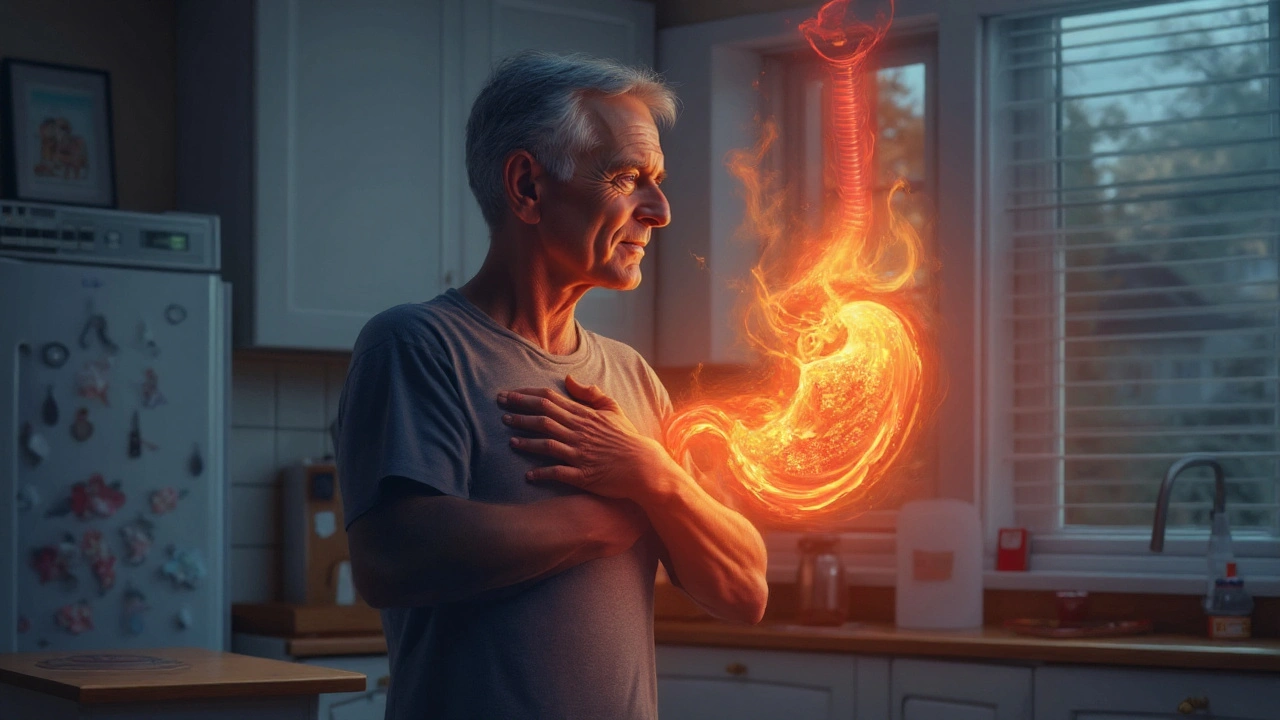Ever feel a burning stomach that just won’t quit? That’s often a sign of acid hypersecretion – when your stomach makes too much acid. Too much acid can irritate the lining of your stomach and esophagus, leading to pain, nausea, and the dreaded heartburn.
Most people don’t realize that a handful of everyday things can push your stomach over the edge. Foods like coffee, chocolate, and spicy meals are classic culprits. Even stress or certain medications, such as some antibiotics and pain relievers, can crank up acid production.
Your stomach cells called parietal cells produce hydrochloric acid to break down food. Normally, hormones and nerves keep this process in check. When something throws the system off balance – like a bacterial infection (Helicobacter pylori), a tumor, or a chronic condition such as Zollinger‑Ellison syndrome – the control loop breaks and acid floods in.
Alcohol and smoking also irritate the lining, making it harder for the stomach to regulate acidity. In many cases, the body’s own feedback signals get confused, so the stomach keeps churning out acid even when there’s nothing to digest.
Acid hypersecretion shows up in a few recognizable ways. The most common sign is a burning pain in the upper belly that may radiate up to the throat. You might also notice a sour taste in your mouth, sour burps, or a feeling of a lump in your throat.
Other red flags include nausea after meals, frequent belching, and an uneasy, bloated feeling. If the acid erodes the stomach lining, you could develop ulcers – painful sores that cause sharp, gnawing pain especially when the stomach is empty.
When acid backs up into the esophagus, it can cause gastroesophageal reflux disease (GERD). That leads to chronic heartburn, coughing, and even tooth enamel erosion over time.
Because symptoms overlap with other digestive issues, it’s a good idea to see a doctor for proper testing. They might recommend an endoscopy or a breath test for H. pylori.
While you’re waiting for a diagnosis, a few practical steps can help calm the burn. Try eating smaller meals, avoid lying down right after eating, and keep a food diary to spot triggers.
Over‑the‑counter antacids can give quick relief, but they don’t fix the underlying problem. If you need longer‑term control, doctors often prescribe proton‑pump inhibitors (PPIs) or H2 blockers, which tone down acid production at its source.
For some, lifestyle changes make a big difference. Cutting back on caffeine, alcohol, and nicotine, staying hydrated, and managing stress with exercise or mindfulness can keep your stomach’s acid factory from going into overdrive.
If a medication you’re taking is the culprit, talk to your provider about alternatives. Sometimes a simple switch can stop the excess acid without compromising your treatment.
Remember, persistent stomach pain shouldn’t be ignored. Early detection of acid hypersecretion can prevent complications like ulcers, bleeding, or strictures in the esophagus.
Bottom line: knowing the signs, spotting triggers, and getting the right medical help can bring your stomach back to balance. Keep an eye on your symptoms, stay proactive with diet and habits, and you’ll be on the road to a calmer, healthier gut.

Explore how Zollinger-Ellison Syndrome drives extreme acid production and why it often mimics or worsens GERD. Learn symptoms, diagnosis, treatment options, and practical tips for managing both conditions effectively.
View more